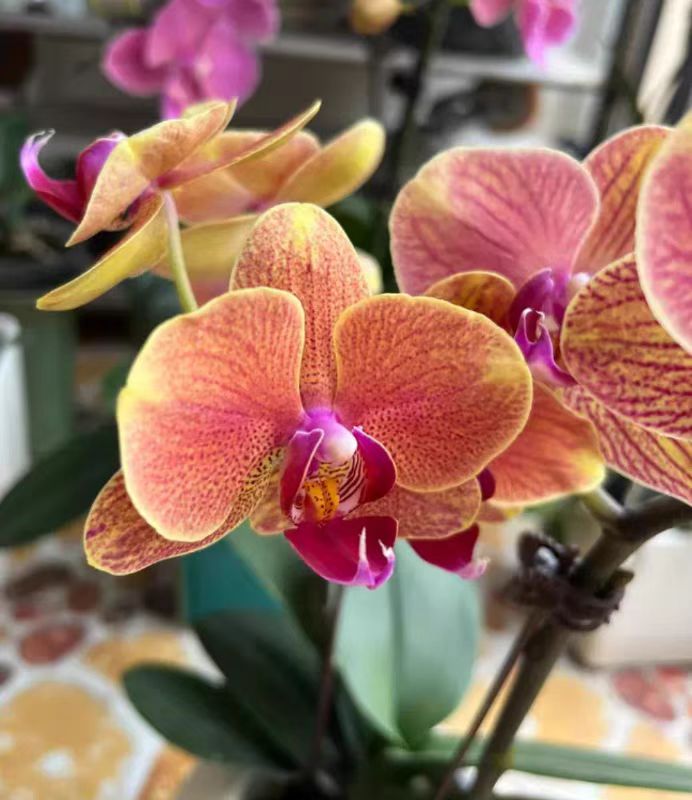For orchid growers, repotting is a crucial part of the maintenance process, which is related to the healthy growth and subsequent blooming of phalaenopsis. When is the best season to repot phalaenopsis? Under what circumstances is repotting necessary? Only by deeply understanding this knowledge can we create a suitable growth environment for phalaenopsis.
The best season to repot phalaenopsis is spring. After a long - term winter dormancy, the temperature in spring gradually warms up and stabilizes at around 15 °C - 20 °C. This temperature range will neither cause phalaenopsis to suffer from frost damage due to low temperature nor affect its growth recovery due to high temperature. At this time, phalaenopsis begins to wake up from dormancy, its metabolism gradually speeds up, its growth activity increases, and the root system also has a stronger ability to adapt to the new environment.
Repotting in spring gives phalaenopsis sufficient growth time. As the temperature rises further, the light conditions are also more suitable, allowing the plant to fully grow and develop in spring and summer, accumulate nutrients, and lay a solid foundation for the subsequent flower bud differentiation and blooming. Compared with other seasons, the air humidity in spring is more suitable. It is neither as hot and humid as in summer, which may lead to wound infection by bacteria, nor as dry as in autumn and winter, which may affect the plant's potting.
In addition, the climatic conditions in spring are more conducive to the repair of the damaged root system of phalaenopsis. During the repotting process, the root system will inevitably be damaged to a certain extent. The warm and humid spring environment can promote the rapid healing of wounds, reduce the risk of bacteria invasion, and make the plant adapt to the new planting material and flower pot environment more quickly.
Circumstances that require repotting of phalaenopsis:
Aging and deterioration of planting material: Phalaenopsis usually uses sphagnum moss, bark, etc. as planting materials. After 1 - 2 years of use, sphagnum moss will gradually rot and lose its water - retaining and breathable functions. After a long - time use, the bark will also decompose and break, resulting in the compaction of the planting material and the poor air permeability. At this time, the root system cannot breathe and absorb nutrients normally in the oxygen - deficient and water - logged environment, and blackening and rotting phenomena will occur. Once the aging and deterioration of the planting material are found, it is necessary to repot in a timely manner and replace the new planting material to create a good growth environment for the root system.
Poor root growth: When there are serious problems with the root system of phalaenopsis, such as a large number of rotting roots, empty roots, or the roots are overly crowded and entangled and cannot grow normally in the original flower pot, repotting is required. The rotting roots cannot provide nutrients for the plant and may also cause bacterial infection, endangering the whole plant. The empty roots indicate that the root system cannot effectively absorb water and nutrients, and the growth of the plant will be seriously affected. Through repotting, the damaged roots can be pruned, the unhealthy parts can be cleaned, and more growth space can be provided for the remaining roots.
Slow or stagnant plant growth: If the growth of phalaenopsis is slow for a long time, the leaves turn yellow and become thinner, or even stop growing. After excluding factors such as pests and diseases and improper maintenance and management, it is most likely that the current planting material and flower pot can no longer meet the growth needs of the plant. In this case, repotting in a timely manner, replacing with more fertile and breathable planting material, and selecting a suitable flower pot according to the size of the plant can inject new vitality into its growth.
Pests and diseases attacking the plant: When phalaenopsis is seriously attacked by pests and diseases, such as root rot, stem rot, etc., and the bacteria have infected the planting material, simple drug treatment is difficult to completely solve the problem. At this time, it is necessary to repot, take out the plant from the original planting material, conduct a thorough disinfection treatment on the root system and the plant, and replace with brand - new planting material and flower pot to prevent the recurrence and spread of pests and diseases.
The selection of the repotting season and the judgment of the situation are of great significance to the growth and development of phalaenopsis. Only by accurately grasping the best repotting opportunity in spring and repotting in a timely manner when the planting material is aging, the root system is in poor condition and other necessary circumstances can phalaenopsis thrive in a suitable environment.
When is the best season to repot phalaenopsis?

Share with
Tagged in :




Leave a Reply